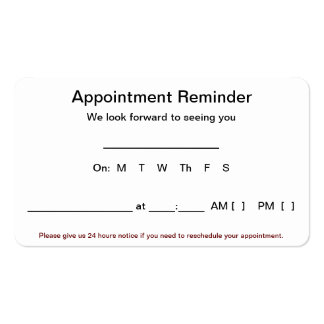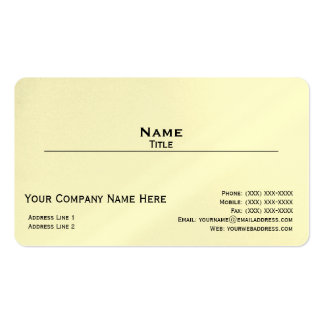To stay relevant in any industry, you have to create and distribute content as often as possible. But how much is too much, when it comes to delivering your words of wisdom to your audience?
These days, there is a very fine line between any type of method of self-promotion conducted online and the purest form of spam, if you want to send out content regularly without offending any spam haters. Naturally, you should do your best not to cross this line. At the same time, you also have to monitor and improve the quality of the ideas that you’re generously sharing with your public.
The biggest issue with quantity is the poor quality. Run-of-the-mill, inaccurate or poorly written content will only jeopardize your good name in your industry, making your readers question your capabilities and reliability.
Quality vs. Quantity: Which One Should You Sacrifice?
Researching, writing, editing and posting every piece of content takes time. Every single step involved in this process is extremely important and should not be eliminated or compressed to preserve your resources. According to a post on Business to Community, brands that produce more content have a greater chance of making their voice heard and establishing a deeper connection with their fans, followers, evangelists and other important groups of people.
5 Steps to Take to Improve the Quality of Your Content
At the same time, if you were to choose between quantity and quality, you should always choose the latter. Lowering the bar for content quality is never a winning strategy in the long run. On the contrary, this counterproductive tactic can only affect your brand’s reputation and impact your marketing goals. If you’re striving to improve the quality of your web writing, here are five easy steps that could help you reach your target.
- Refine Your Definition of Quality Content. What does the concept of “quality content” actually mean to you? Naturally, when it comes to defining this term, you think about compelling writing that sells, sells and then sells some more. But undoubtedly, this interpretation is a bit vague. When in need of a more detailed explanation, go back to your previous content analysis and extract the numbers that interest you the most (shares, conversions, number of views and so on). This will help you differentiate high-quality content pieces from the ones that have performed poorly. What are the attributes of your written masterpieces? What kind of message do they convey? What is the writing tone? What topics are covered? What kind of calls to action are included? Use the answers to these questions to perfect your definition of quality content and come up with a series of guidelines meant to improve your writing. To make sure that everything goes as planned in the long term, don’t forget to audit the overall performance of your web content on a regular basis.
- Do Your Homework and Do Not Neglect the Tiny Details. Research is the key to success in any field of activity; therefore, always try to find out everything there is to know about a certain topic of interest before putting pen to paper. As Content Marketing Institute indicates, a clear insight into a high-interest matter, correlated with in-depth keyword research and an understanding of your audience and main competitors can help you raise the quality of your content pieces virtually instantly. Also, no matter how little time you have, don’t overlook the aspects that you may be tempted to think of as insignificant details, such as distributing keyword terms across your web content, tweaking those long paragraphs or tightening a title to amplify its power of seduction.
- Monitor and Support the Efforts of Your Content Creators. Raising the quality of the web content that you publish regularly is no easy task. As a matter of fact, this process involves several important steps, like having an editor look over your content, scheduling with editorial calendars and brainstorming topics with your team. Quality content involves teamwork at its finest. A word of advice here: don’t look at your content marketing as the last thing to do on your marketing agenda! According to Hubspot, a proactive attitude and proper planning can help you motivate and educate your contributors and lay the foundation for a stronger, more successful content team.
- Emphasize Quality over Quantity. Some business owners are far from being consistent. They stick to a tiresome, predictable and unsuccessful one-post-per-month routine and wonder why they constantly fail to achieve their objectives. Others fall into a different kind of trap: they are unable to filter, prioritize and materialize their ideas. At the end of the day, they “infoxicate” their followers with dozens of tweets, at least ten Facebook posts and a plethora of poorly written blog entries every single day. In reality, both extremes can be dangerous, so it would be best to take the middle course. To make matters even more complicated, some businesses blog every day (or vlog, or photograph) – through some content medium – and never spam or over post. So the question is this: how often should you actually post on social media platforms without annoying the people who follow you? Although there is no exact formula that you can apply to come up with an accurate answer to this question, you can get an idea of how often your audience would like to hear from you by taking a closer look at the infographic published by Buffer. According to this source, 5 posts on Pinterest, 3 tweets, 2 Facebook posts and 3 Google+ can become the main ingredients of your own customizable recipe for success that you can apply when it comes to distributing your content through social networking websites.
- Try to See (and Write Down) Things from Your Readers’ Perspective. Need another great piece of advice to elevate the quality of your writing? Cultivate your empathy. Brands that stay self-centered have minimal odds of survival in overly competitive markets where companies basically fight for the same pairs of eyeballs. As Advertising Age points out, businesses that won’t stop talking about themselves are running in circles without getting any closer to their most ambitious goals. The same goes for companies that automatically try to force feed their readers with the same kind of content, over and over again. Would you eat the same meal three times a day, every single day? After the first week, you would practically be begging for a change of menu. When it comes to crafting content, keep in mind that location and timing are everything. Also, invest in research that will highlight the likes, dislikes, needs and expectations of your targeted audience. By putting your prospects exactly where they belong, in the center of their unique online experiences, you can elaborate higher-quality content that manages to establish an emotional connection with your readers.
Can Quality and Quantity Be Considered the Perfect Halves of the Same Whole?
In an ideal world, quantity and quality should be a part of the same picture. But sometimes reality slaps any business owner in the face, reminding him that staffing shortages, an overcrowded schedule and budget limitations stand in the way of content creation efforts. In this context, should you lower your quality standards and publish recycled content as often as possible hoping that your readers won’t notice or should you take the time you need to produce, edit and deliver truly amazing written materials?
Quantity is a key factor that you should consider while creating and setting up your content strategy. If you want your writing to appear in search engine results, attract more visitors and perform better online, you have to churn out web content on a regular basis. But at the same time, you should be willing to sacrifice quantity for the sake of quality at any given point in time. High-quality content is the reason why your prospects are landing on your page in the first place; this is also your strong point allowing you to build credibility and trust, two invaluable assets that define your position in your market. Why choose between quality and quantity when you can have both in the very same package with a cherry on top? By hiring a team of professional writers you could prevent any potential quality and frequency issues and surprise your readers with fresh writing that is easy to read, informative, educational and entertaining at the same time.








No comments:
Post a Comment